These days, all Corvettes are assembled at the Bowling Green Assembly Plant and this has been the case for over 30 years since the plant opened on June 1, 1981.
But this Bowling Green facility was not the first, or even the second plant to build Corvette. Corvette production all started back on June 30, 1953 at GM’s Flint, Michigan facility.
Mass Production - Flint, Michigan
Legendary GM stylist, Harley J Earl, was charged by GM to design a sporty two-seat convertible to counter the British sports cars being imported to the US after the second world war. The vehicle, named Corvette, was prototyped to appear at the Chevrolet Motorama display at the luxurious Waldorf-Astoria Hotel in New York City. The car was such a success with the public that GM decided that it would go immediately into production and came up with a short-term solution on how to build 300 Corvettes before the end of the 1953.

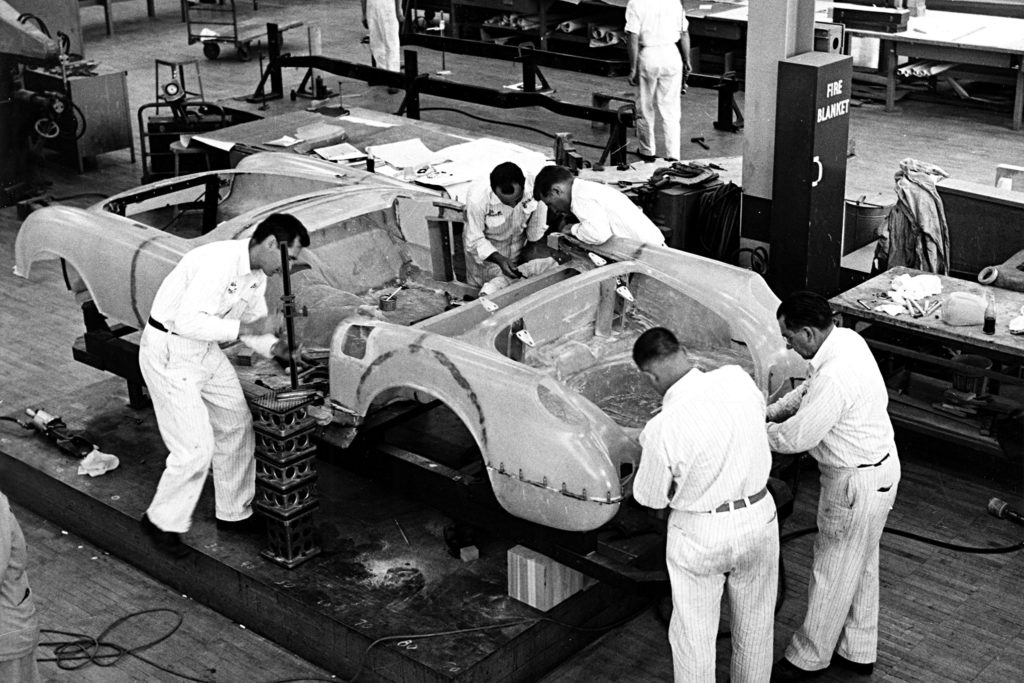
This plan involved a temporary production facility at the Flint, Michigan assembly plant, although the first two production cars were assembled in an area inside the customer delivery garage. The Flint plant chosen to build the 1953 Corvettes was set up with two lines – one for the bodies and one for the chassis. Once the chassis was complete, the fibreglass body would be lowered onto it.
GM wanted all 300 cars to be completed by Christmas 1953 and in line with this, the 300th (and last) Corvette rolled off the line on Christmas eve, 24 December, 1953. These were the only Corvettes the Flint facility would ever produce.
St Louis - Corvette's Second Home
The St Louis facility was always the planned assembly plant for Corvette, but it could not be prepared in time to build the initial 300 Corvettes that made up the 1953 model year’s production. So, when Chevrolet finished off the 1953 production, the equipment was moved to St Louis to form this plant’s third assembly line. Production of the 1954 Corvette kicked off right after Christmas.
After a tough couple of years, things started to improve for Corvette, starting in 1956, with sales increasing each year. Corvette annual production exceeded 10,000 units for the first time in 1960, peaking for the first-generation cars at over 14,000 units in its last year of 1962.
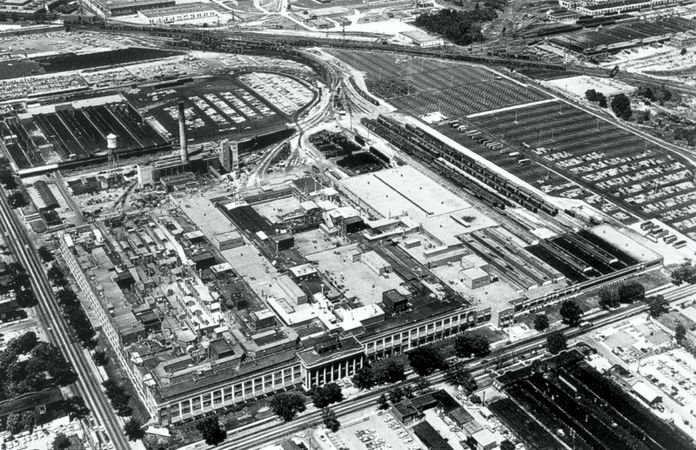
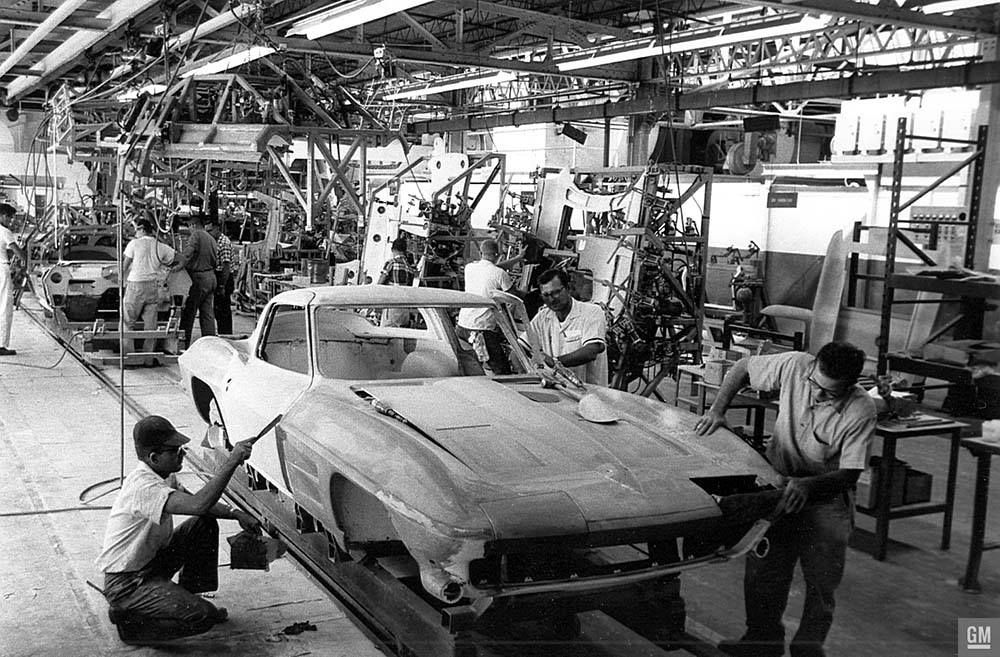
The second-generation cars went into production in 1962 for the model year 1963 cars. The all-new Sting Ray model, designed by Bill Mitchell, proved to be a sensation and sales in the first year jumped to over 20,000 with the plant struggling to keep up with demand, even with an extra shift. With the entry of the third generation “shark” model Corvette in 1968, sales and production numbers jumped again. Production numbers topped 40,000 for the first time in 1976 and stayed there for most of the remaining years of the third generation. Production exceeded 50,000 in 1979, producing the all-time record for Corvette of 53,807, a number that has still never been beaten.
Bowling Green, KY - Corvette's New Home
The 1982 model year Corvette began production on June 1, 1981, in the new Bowling Green, Kentucky, assembly plant. This marked a unique two-month period in which Corvette production at both St. Louis and Bowling Green overlapped. The last Corvette was driven off the St Louis assembly line on July 31, 1981, signalling the end of an era. Over the last 27 years, about 700,000 Corvettes had been assembled in St Louis. With production ending, approximately 1,000 St. Louis employees made the difficult decision to leave their hometown and relocate to the new Corvette facility in Bowling Green, Kentucky.
The Bowling Green assembly plant has now been the exclusive home of Corvette for over 30 years eclipsing the 27 years at St Louis. The facility, which had previously been a Chrysler air-conditioning unit plant, was restored by GM in 1981 to become a contemporary automobile manufacturing plant, well suited for America’s premier sports vehicle. The facility was refurbished, and a new assembly line installed at a cost of around $130 million.

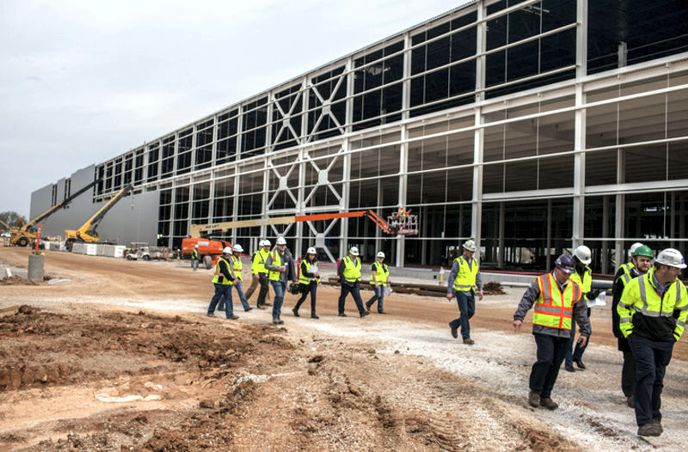
In May, 2015, General Motors announced moves that included building a 450,000 square-foot paint shop that was almost half the size of the entire current production facility. Then, in 2017, when a further paint shop addition was complete, the factory practically doubled in size again. The BGA Paint Shop is now 800,000 square feet, and has three floors, nineteen vertical displacement lifts, 51 robots, 240 employees and three-panel suppliers. All paints are formulated to be applied in the BGA Paint Shop. The BGA Paint Shop can now handle 12 different paint colours.
Performance Build Centre
In 2015, the Performance Build Centre was relocated to the Bowling Green plant. The performance build centre allows customers to be able to build their own engine and watch the production of their car, now all in one location. The centre is also the source of all the special hand assembled dry sump engines, including the all-new 2023 Z06 flat-plane crankshaft engine.
BGA Plant Tours
The Bowling Green Corvette Assembly Plant offers plant tours to the public Monday through Friday, in groups of 20-25 people. After a brief safety video and an introduction to the plant, visitors embark on a one hour, one mile walking tour of the assembly area.
Tours can be pre-booked through an online booking system, which is recommended to ensure your tour.

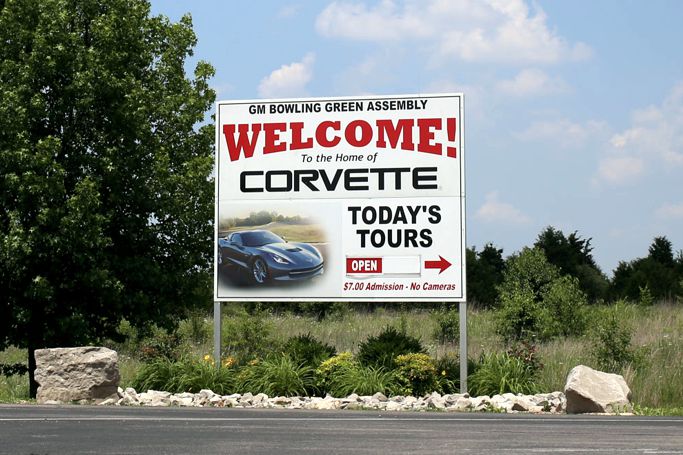
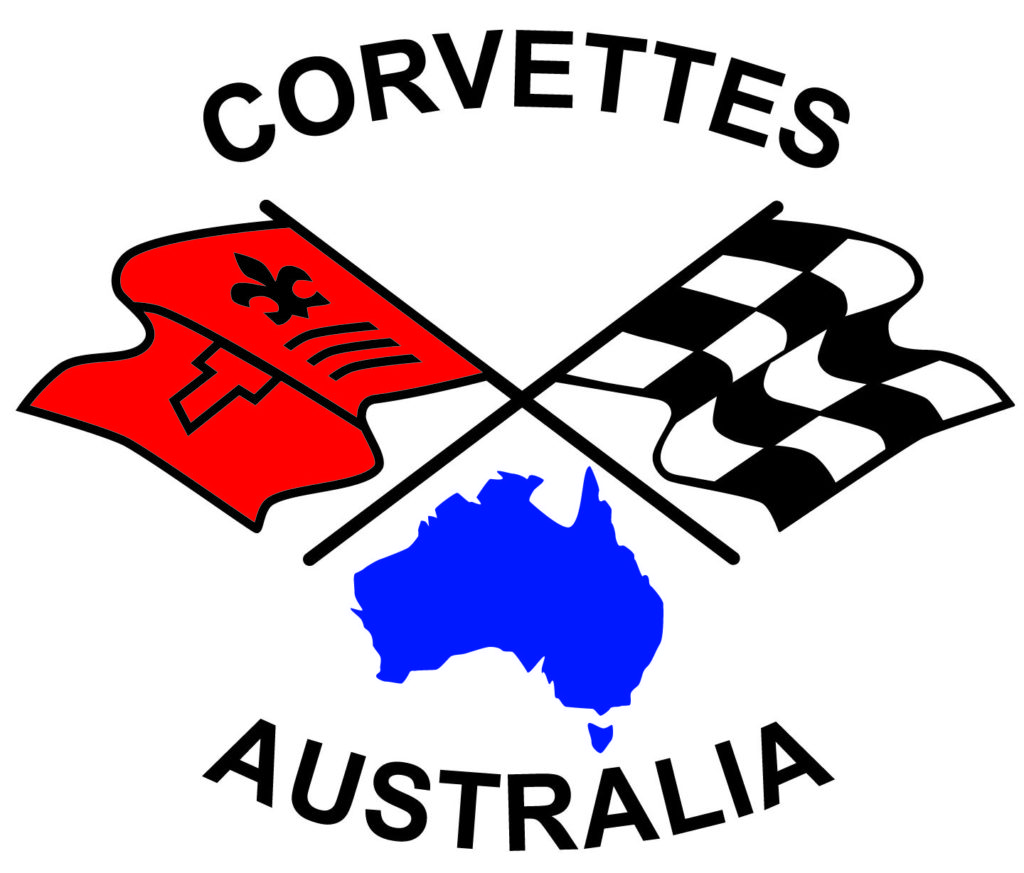
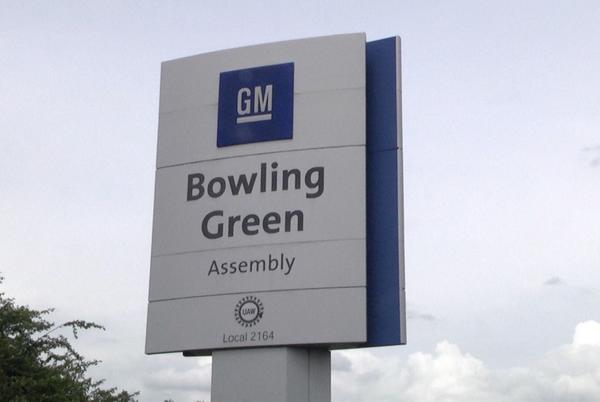
3 Responses
please reopen your wonderful Corvette plant and make the new Corvette car forever and ever and general motors is the best company in the world to work with for a very good company forever I have two corvettes myself and they are the best companies in the world and Corvette is the best car ever made in the world buddy
i ordered a stingray in november is there any way you can contact me when it is in production
can i get a email when my order is in production